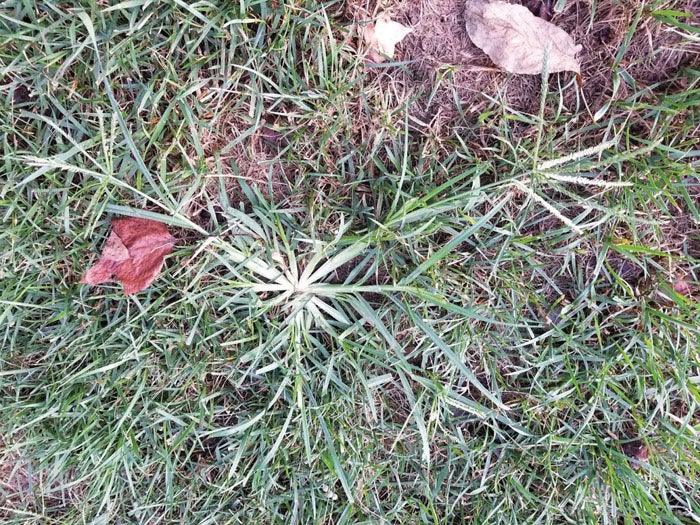It’s been a rough spring and summer for lawns
Published 12:00 am Friday, August 11, 2017

- Submitted photo Goosegrass has a wagon wheel appearance at the base and often comes after crabgrass.
If Charles Dickens were alive and well and visiting Rowan County, instead of writing “A Tale of Two Cities” he may well have written “A Tale of Two Lawns” — “It was the best of lawns. It was the worst of lawns.”
In May, many newly seeded fescue lawns throughout Rowan County looked fantastic. Now, at this point in August, many lawns are nearing a total disaster. Here are a number of situations that have caused newly seeded fescue lawns to decline so quickly this summer. You may be able to identify with these problems and hopefully implement possible solutions.
Too much shade. In the fall and spring there were no leaves on large trees surrounding the fescue yard. Fescue needs full sun to grow and develop strong roots. As large trees reach maturity, so does the amount of shade produced. In order to have maximum growth, fescue grass must have full sun. Elimination of shade with judicious pruning or removal allows needed light to the areas planted in fescue.
Weed competition. Annual weeds such as winter annual bluegrass compete with fescue in the early spring. The weed dies out in June, but the damage has occurred by weakening fescue growth and development. When annual bluegrass dies, it is rapidly replaced by other summer weeds such as crabgrass. Lawns with a history of annual bluegrass and crabgrass need to have solid stand of fescue to compete.
Improper seeding. Measure your areas and calculate proper seeding rates before planting in the fall. Planting too much seed can be as bad or often worse than planting too little seed. Adding extra to make sure can often lead to disasters later in the spring and summer.
Fungal diseases. Cool season fescue looks great in May but when temperatures climb into the mid-80s, coupled with high humidity, fungal diseases such as brown patch and dollar spot occur. Once established, brown patch will return for years on a regular basis, causing brown circular spots in the lawn. Fungicide applications in the summer months as a preventative will control the spread of the disease. The fungus damages and weakens established fescue. However, it will kill newly seeded or weakened fescue lawns.
Traffic on newly seeded lawns. Cool season fescue will not tolerate heavy foot traffic. If you tend to continuously walk on newly seeded areas, overactive kids or even pets can weaken and kill newly planted fescue. Avoid foot traffic on fescue as much as possible.
Bad mowing practices. Cool season fescue needs to be mowed often to 3-1/2 to 4 inches. Mowing too close or waiting to mow after the grass has grown tall is a common problem that weakens or destroys a lawn within minutes. Mowing an overgrown fescue lawn close is certain death, especially in hot growing conditions.
Unusual weather. It’s easy to blame weather, but when you have constant rain, then excessive heat, drought and then more, it is a definitive factor. Fescue is a cool season grass that really hates excessively hot weather.




